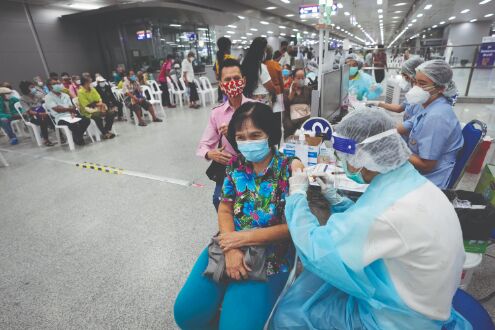COVID-19 vaccine inequity: Inside the cutthroat race to secure doses

Paris: No one disputes that the world is unfair. But no one expected a vaccine gap between the global rich and poor that was this bad, this far into the pandemic.
Inequity is everywhere: Inoculations go begging in the United States while Haiti, a short plane ride away, received its first delivery July 15 after months of promises 500,000 doses for a population over 11 million.
Canada has procured more than 10 doses for every resident; Sierra Leone's vaccination rate just cracked 1 per cent on June 20.
It's like a famine in which the richest guys grab the baker, said Strive Masiyiwa, the African Union's envoy for vaccine acquisition.
In fact, European and American officials deeply involved in bankrolling and distributing the vaccines against Coronavirus have told The Associated Press there was no thought of how to handle the situation globally. Instead, they jostled for their own domestic use.
But there are more specific reasons why vaccines have and have not reached the haves and have-nots.
COVID-19 unexpectedly devastated wealthy countries first and some of them were among the few places that make the vaccines. Export restrictions kept the doses within their borders.
There was a global purchase plan to provide vaccines for poorer countries, but it was so flawed and underfunded that it couldn't compete in the cutthroat competition to buy. Intellectual property rights vied with global public health for priority.
Rich countries expanded vaccinations to younger and younger people, ignored the repeated pleas of health officials to donate their doses instead and debated booster shots - even as poor countries couldn't vaccinate the most susceptible.
The disparity was in some ways inevitable; wealthy nations expected a return on their investment of taxpayer money. But the scale of the inequity, the stockpiling of unused vaccines, the lack of a viable global plan to solve a global problem has shocked health officials, though it wasn't the first time. This was a deliberate global architecture of unfairness, Masiyiwa told a Milkin Institute conference.
We have no access to vaccines either as donations or available for us to purchase. Am I surprised? No, because this is where we were with the HIV pandemic.
Eight years after therapeutics were available in the West, we did not receive them and we lost 10 million people.
It's simple math, he said. We have no access. We have no vaccine miracle.
The World Health Organization has duly updated its epidemic playbook after every outbreak, most recently with Ebola in mind. Then, as often in the decades before, an emerging illness was largely contained to countries lacking robust public health services, with poor sanitation and crowded living conditions and limited travel connections.
For years, the WHO assessed countries' readiness for a flu pandemic: The United States, European countries and even India ranked near the top. The US readiness was 96 per cent, and Britain at 93per cent.
On January 30, 2020, WHO declared the Coronavirus outbreak in China to be a global emergency. It would be months before the word pandemic became official.
But that same day, the Coalition for Epidemic Preparedness and Innovations, or CEPI, was planning for the worst.
CEPI announced a call for proven vaccine technologies applicable for large scale manufacturing, according to minutes from its scientific
advisory group.



